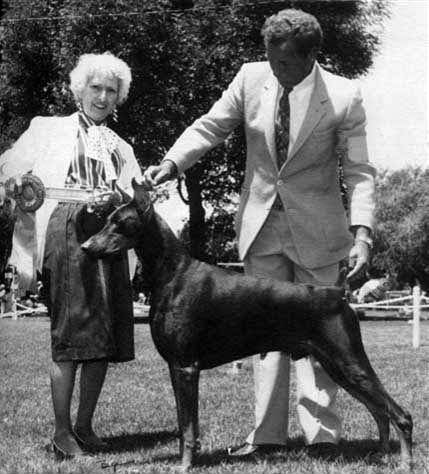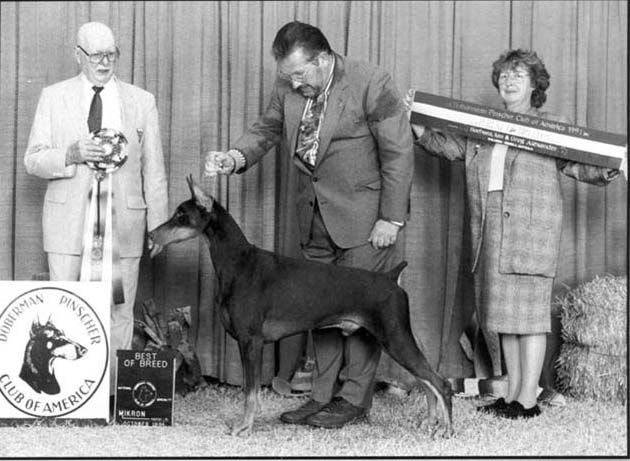History of the Breed
By Darlene Young
Darwin Dobermans
Photo by Liz Manning
There is so much history on the Doberman Pinscher contained in many excellent publications. I have chosen information and excerpts from The Complete Doberman Pinscher, Written by Noted Breed Authorities, Howell Book House Inc. (1969, 1953) for this summary of our breed.
To tell the Doberman story, we must start at the beginning of the breed in Germany, and with Herr Karl Friedrich Louis Dobermann, a night watchman in the town of Apolda, who was accompanied on his rounds by his black and tan Pinscher.
Herr Dobermann was born on February 2, 1823, and while a young man worked as an official of the court of alderman. He was later given the position of dogcatcher and the administrator of the chamber of accounts of Niederrossia—Apolda, as well as a being an official of the tax office. He was also employed as the night police officer. For this, he selected a likely specimen from the dog pound to accompany him on his rounds.
He called the dog Schnupp but apparently did not consider him fit for breeding purposes: records show that Schnupp was neutered at nine months of age. He later acquired a female and named her Bisart. When she was in season and accompanied Herr Doberman on his rounds, no other protection was needed. Herr Doberman’s son, Louis Doberman, tells us that his father bred some very good puppies from Bisart.
After the death of Herr Dobermann, several promoters, who admired the character and temperament of the dog Doberman sponsored, endeavored to improve its appearance and establish a breed of dog that could be recognized in the national kennel club of Germany.
The breed of today can be traced back to the 1890s when the first animals entered in the DobermannPinscherverein stud book were whelped.
The following are excerpts from the article “Illena and the Seven Sires” written by the great lady of Dobermans, Mrs. Bob Adamson, to the owner of the great Dictator and included in the publication noted above.
“In the history of the American Doberman, eight dogs produced more than ten American champions each. There were, Ch. Westphalia’ Rameses, Ch. Dow’s Illena of Marienland, Ch. Favoriet von Franzhof, Ch. Westphalia’s Uranus, Ch. Emperor of Marienland, Ch. Domossi of Marienland, Ch. Alcor von Millsdod and Ch. Dictator von Glenhugel.
“The seven sires were responsible for an era in American Dobermans which was exciting and colorful as the dogs themselves. With their passing, passes an era. History will not soon see the time when seven males of such stature live contemporarily again.”
I highly recommend you acquire some of the old Doberman books and publications as I did when I first began this journey and read more on the history of this great breed.
Annagret II v Thueringen and female Claudius v Thueringen, were two of the first quality Dobermanns to be imported to the United States in 1907 and became the foundation of quality Doberman breeding in America.

Marco v. Jaegerhof
was a major contributor in Germany in 1908
1908 is the year that the Doberman breed was first registered with the American Kennel Club.
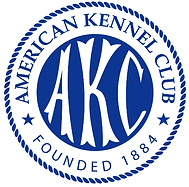

Prinz Modern v Ilm-Athen
Prinz Modern V Ilm-Athen was the progeny of Greif v Groenlan and Lady v Ilm-Athen. Lady v Ilm-Athen was part Manchester Terrier. This was the first Manchester Terrier cross in the breed’s history. Prinz Modern V Ilm-Athen was a popular stud due to his conformation. Unfortunately, he transmitted his lack of courage. According to Doberman pioneer Philipp Gruenig, this is the first moment that a significant dilution in sharpness is believed to have happened in the breed. It is believed that the breed did not recover from this reduction until the incorporation of the Greyhound. Prinz Modern V Ilm-Athen was imported to America and became one of the fundamental dogs in the Doberman’s American History in 1909.
America imported some of Germany’s top dogs in form and of moderate sharpness in 1920. There were only 45 registered Dobermans in America. One of the dogs that was imported to America that year was a Holland bred male Benno vom Roemerhof.
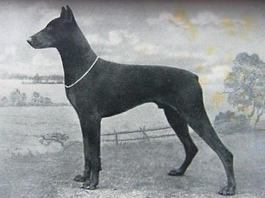
Benno vom Roemerhof
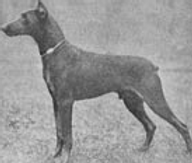
In 1921, Prinz Favorit v.Koningstad, a large Dutch brown male was imported to America. He contributed greatly to the American gene pool.
Prinz Favorit v.Koningstad
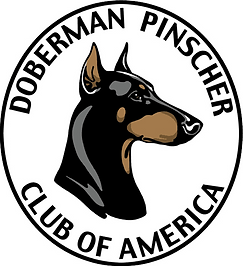
In 1921 The Doberman Pinscher Club of America was founded by George Earle III. An American Doberman authority had now been established. This is when American Doberman leaders began to shape the breed into their own vision. Their primary focus was refinement. With the formation of the Doberman Pinscher Club of America, 1922 was the beginning of the Doberman surpassing 100 registrations every year. The first Doberman appeared very briefly on screen in the movie The Kennel Murder Case in 1933. In 1934, more than 1,000 were registered each year. In 1941 there were 1,637 Dobermans registered and they were 15th in popularity amongst purebred dogs.
dobermanns in USMC
During WWI, Germany had trained and deployed over 30,000 dogs, some of which were Doberman(n)s. However, it wasn’t until 1935 that the Marines started showing interest in war dogs. They had experienced more intimately the enemy’s sentry dogs used in Haiti and in the other “Banana Wars” in Central America. Dogs were posted around “guerrilla camps” in the jungle and alerted at the approach of the Marines. The Marines learned the value of dogs used as sentries and scouts. In December of 1941, the United States was dragged into war with the bombing of Pearl Harbor. The Marines thought they would have to fight the Japanese in the Pacific. Since the Japanese were well established in the islands and atolls of the central, south, and west Pacific, the Marines knew that they were going to be fighting in tropical climates where the vegetation provided jungle-like coverage. In such conditions, dogs would be ideal sentries and couriers. The United States knew that the Doberman(n) had been an effective war dog for the Germans in the past. Although there were not a great number of Doberman(n)s, they were the one breed that had been produced to be “police-soldier” dogs. In 1942 the Doberman Pinscher Club of America was formally approached to recruit Dobermans for the newly formed Marine Corps War Dog Training Facility at Camp Lejeune (New River, North Carolina.) Doberman(n) owners within the U.S. were asked to volunteer their dogs. Owners were told that the dog would be returned to them if they failed to qualify or would be returned at the end of their tour of service. In addition, fourteen Doberman(n) Pinschers were donated by the Baltimore, Maryland, and Canton, Ohio members of the Doberman Pinscher Club of America. The First Marine Dog Platoon consisted of 21 Doberman(n)s and three German Shepherd Dogs. These dogs were trained to be Messenger, Sentry, or Scout dogs. In the end, 90% of the Marine “Devildogs” were Doberman Pinschers. Most of them were recruited through the efforts of the DPCA. There were also some German Shepherd Dogs that were obtained from the U.S. Army and the remaining dogs were enlisted directly from their owners.
History of the Doberman 1897-2005
compiled by V. Cherie Holmes
The Doberman Pinscher is a compilation of many breeds. The following is a list of breeds thought to be the predecessors of the modern Doberman. These animals contributed to the Doberman over a period of 35 years.
The old German Shepherd dog:
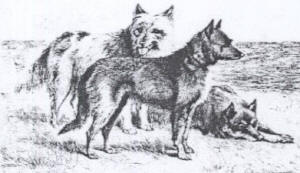
These shepherd dogs were crossed with Pinschers to produce a Thuringer type butcher dog that was common in the area. In the early part of the 1870’s, it was told, Herr Dobermann crossed the progeny of a blue-grey Pinscher type bitch and a black and tan butchers dog, with a German Pinscher. This may be the first indication of the breeds used in the development of our breed.
The Butcher Dog, who was the ancestor of the Rottweiller as well as the Doberman, shows very strongly in this dog,
Graf Belling von Gronland, shown below.
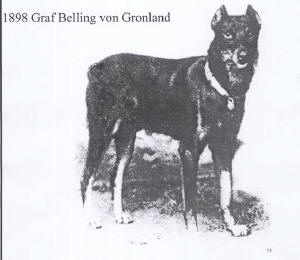
At one of the first shows, in 1899, there were 12 Dobermans including the winner, Graf Belling, in a ring. It was said that those 12 dogs were so similar to Rottweilers that you could not tell the difference between a bad Rottweiler or a good Doberman, apart from the cropped ears!
The Beauceron : Their link to Dobermans can be made in that the Beauceron was brought to Prussia in 1806 with Napoleon’s army. The Beauceron, shown below at the turn of the century, were known to have interbred with the local dogs.
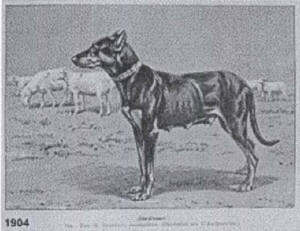
The German Pinscher:
The legacy of the German Pinscher addition is very little. It may be deemed that this addition was not a goal, but a stepping stone, and not as harmful as a breed with a more distinct type than the Doberman, would have been. The dilution of German Pinscher blood has been complete many years ago as this was not the direction the originators of the breed were wanting to go. The head, size, and body shape were not in our blueprint, and so were eliminated over time with selection.
In 1939, Herr Gruenig, (in his book, The Doberman Pinscher, 1939), said,” The German Pinscher contributed little to the head type. The Rottweiler, or old Butcher’s dog, sporting dogs, all added traits like heavy jowls, and thick skulls in which earlier specimens bear testimony.
In 1902, a Gordon Setter was crossed in, with the purpose of improving the coat color. As the short coat proved dominate, no harm was immediately seen. The color of the coat was not improved, but generations later, the long coat would show up, when the genes inadvertently were doubled.
This is a picture of 2 early dogs, circa 1899. The size of these early dogs were around 25 inches for males. The first standard was written in 1899, upon the formation of the first Doberman Club. As soon as this blueprint was set down, the breed changed rapidly into the dog we know today.
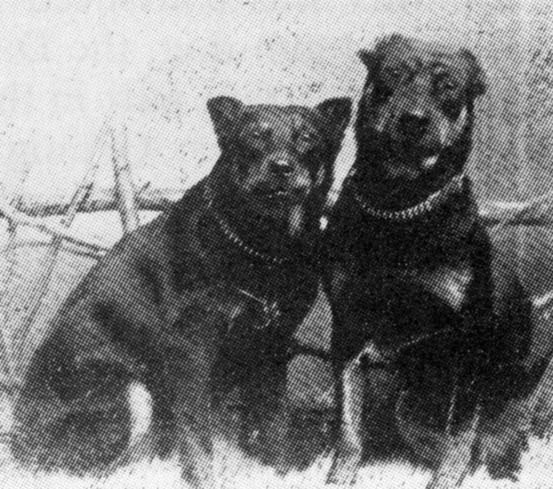
At the turn of the century , the Manchester Terrier was added. As the German Pinscher, Manchester Terrier, Rottweiler, and Beauceron are very similar in look, these crosses did not change the appearance of the turn of the century Doberman, as much as it enhanced it. Phillip Grunig stated in 1939, of the dogs of that period, “Under these circumstances it would be difficult to distinguish a coarse Doberman from a refined Rottweiler. It would be equally difficult to distinguish a small and delicate Doberman from a coarse German Pinscher, etc.”
The Doberman of today owes his present form to the many crosses done in the early years. Below is a picture of Fedor V. Arpath, born in 1906. This dog is 1/4 Manchester Terrier.
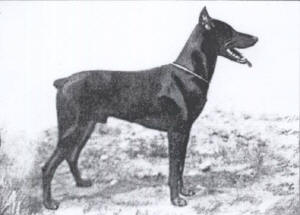
The Manchester was added to get the smooth, short coat that we desired. The hair is also very thick, with many hairs per square inch.
| Alarich v. Thueringen , born 1897, is an excellent example of what the breed was like at the turn of the century. |
Greyhound:
A black Greyhound male from England was the sire of a bitch named Stella, a stud book entry in 1908.
| Rival’s Adonis, best of his day, 1914 ,and a great stride forward You can see that with the concentration of breeders and their dogs, the shape is already in sight. |
Doberman Pinscher Club Of America was formed in 1921, when the fanciers attending the Westminster show decided to band together to promote their then relatively unknown breed. The official German standard was adopted by the DPCA on Feb. 13, 1922.
Breeders, remember, you have been given, by your predecessors, the torch and a blueprint to follow. As the breed is only a little over 100 years old, it could be set back seriously in only a few generations of short-sightedness.
Judges must recognize that although our breed has many breeds in it’s makeup, it must not look like any one of them. You must5 see those breeds only as threads in the fabric. The making of the Doberman Pinscher is not over, but we hope you have enjoyed the story of the first one hundred years.
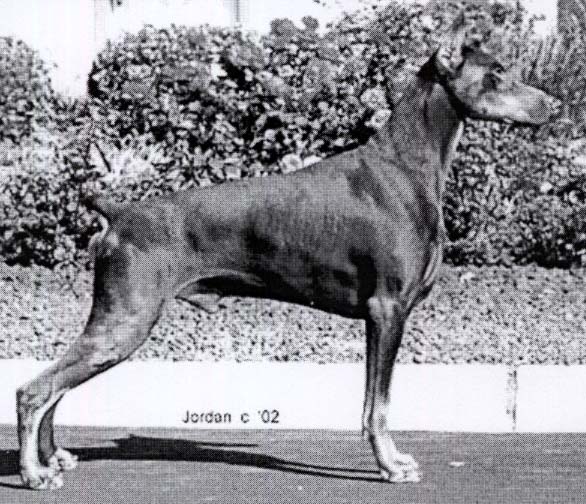
Am Ch Darwin’s Dance Of The Hour, Owners: Marilyn Altheide, Darlene Young
